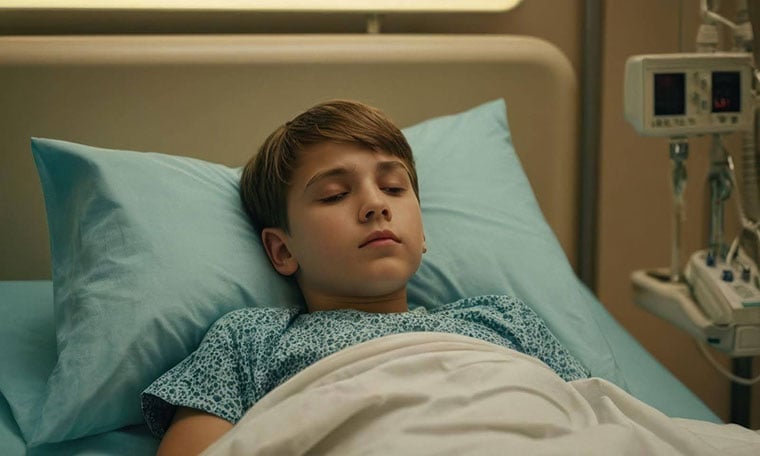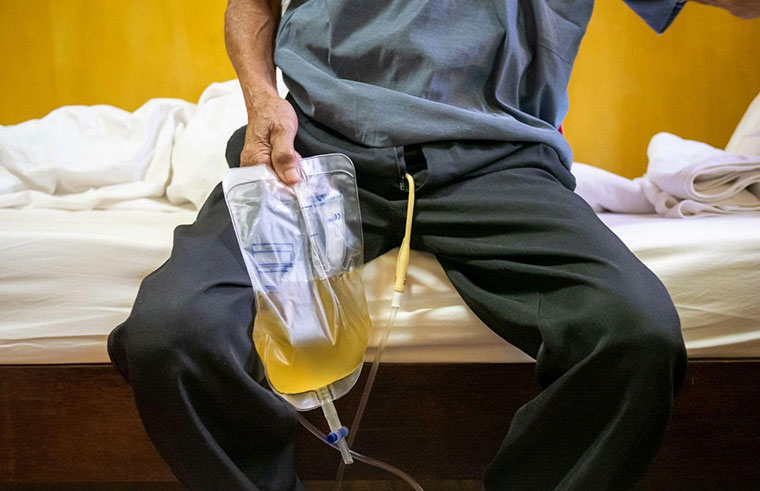Catheter-Related Urethral Injuries in Male Children

Urethral trauma in pediatric patients is a significant yet often overlooked concern in urological care. Although urethral injuries account for a small percentage of overall pediatric trauma cases, they can lead to long-term complications if not managed properly. Up to 25% of hospitalized patients undergo routine urethral catheterization, and while the incidence of iatrogenic urethral trauma is approximately 0.3%, its impact is substantial. Traumatic urethral catheterization can lead to acute complications such as urinary retention, bleeding, and urosepsis, as well as long-term risks like urethral stricture disease, requiring frequent dilation or reconstructive procedures.
Introduction
Despite the high morbidity associated with catheter-related urethral injuries, there remains a lack of clear, standardized guidelines for their management. Studies have shown that 81% of patients with iatrogenic urethral injuries suffer from complications classified as Clavien-Dindo grade 2 or higher. Additionally, 24% of affected individuals require an indwelling suprapubic catheter, and 21% depend on long-term transurethral catheterization.
The economic burden is also considerable, with a single study reporting an additional cost of €335,377 ($371,790) for managing iatrogenic urethral trauma over six months. These statistics highlight the urgent need for better prevention strategies, improved catheter safety mechanisms, and standardized treatment protocols to minimize complications and ensure optimal long-term outcomes for pediatric patients.
Causes and Mechanism of Injury
Catheterization is a routine procedure in pediatric care, yet improper technique or difficult anatomical conditions can lead to urethral injuries. These injuries are primarily caused by two common mechanisms: false passage formation and balloon inflation within the urethra.
False passage formation occurs when excessive force is applied during catheter insertion, leading to the creation of an abnormal channel in the urethral wall. This is more likely in male children due to the longer and more tortuous course of the male urethra. In cases where resistance is met, repeated attempts to insert the catheter can worsen the injury, resulting in bleeding, pain, and difficulty urinating.
Another mechanism is inadvertent inflation of the catheter balloon within the urethra instead of the bladder. If the balloon is inflated too soon, it can cause local trauma, mucosal tears, and partial urethral obstruction, leading to pain and urinary retention. This type of injury is often preventable with proper technique, ensuring that urine return is observed before balloon inflation.
Unlike high-impact traumatic urethral injuries, catheter-induced urethral damage rarely results in complete urethral transection. The nature of these injuries is typically partial due to the mechanism of trauma, as the catheter does not exert enough force to sever the urethra completely. Instead, injuries usually involve mucosal tears or partial disruptions, which, if not managed properly, can lead to complications such as strictures. This highlights the need for careful catheterization techniques and standardized guidelines to reduce the risk of injury in male pediatric patients.
Signs and Symptoms
Catheter-induced urethral injuries present with distinct symptoms, including pain, hematuria (blood in the urine), and difficulty urinating. These symptoms can range from mild to severe, depending on the extent of the injury.
Partial urethral injuries typically manifest as pain during urination, mild hematuria, and urinary hesitancy. However, more severe complications may lead to significant bleeding, complete urinary retention, or signs of infection such as fever and chills. In a study of catheter-related injuries, urosepsis occurred in 40% of these cases, with 13% sustaining acute kidney injury due to obstructive uropathy. Two patients (6%) developed severe urosepsis requiring ICU admission, while one required dialysis due to severe uremia.
Parents and caregivers should closely monitor children for signs of discomfort, urinary difficulty, and abnormal urine color. Persistent urinary retention or worsening pain may indicate a significant injury requiring urgent medical evaluation. Hematuria severe enough to necessitate continuous bladder irrigation, observed in 6% of cases, suggests considerable trauma. In cases of infection, prompt recognition and treatment are crucial, as untreated urosepsis can progress to septic shock. Early detection and appropriate intervention significantly improve outcomes, reducing the likelihood of long-term complications such as urethral strictures or chronic catheter dependence.

Diagnosis and Initial Management
Early detection of urethral injuries relies on a thorough medical history and physical examination. Symptoms such as blood at the urethral meatus, perineal bruising, and urinary retention should prompt immediate evaluation. Imaging studies, including urethrogram, ultrasound, and micturating cystourethrogram (MCUG) when necessary, help assess the severity and location of the injury.
Initial management prioritizes bladder drainage to prevent complications. Depending on the severity of the injury, this may be achieved via urethral catheterization or suprapubic (SP) catheter placement. In cases where a false passage or significant trauma is suspected, a urologist may attempt gentle catheter insertion under fluoroscopic or cystoscopic guidance. If unsuccessful, SP catheterization remains the preferred option.
The management approach for paediatric urethral injuries has traditionally followed adult treatment protocols due to the lack of specific paediatric data. However, catheter-related injuries often necessitate a more conservative approach, with drainage typically maintained for one to two weeks before reassessment. If the patient remains stable, a Trial Without Catheter (TWOC) is conducted. Successful voiding indicates recovery, whereas persistent urinary retention warrants further investigation, such as MCUG, to determine the need for continued catheterization or surgical intervention.
Most paediatric patients recover with conservative management. However, severe cases, particularly those involving iatrogenic injuries, may require late surgical repair.
Long-Term Follow-Up and Outcomes
Long-term follow-up is critical for patients recovering from urethral trauma to monitor urinary function, detect complications, and intervene early when necessary. Studies indicate that without proper follow-up, urethral strictures develop in 50-90% of cases, often requiring further interventions such as serial dilations or urethrotomy. Regular assessment of urinary flow, post-void residual volume, and symptoms like weak stream or dribbling helps identify functional impairments early.
Imaging plays a key role in follow-up. Ultrasound is commonly used to monitor back-pressure changes that could indicate bladder dysfunction or upper urinary tract involvement. In younger children, micturating cystourethrogram (MCUG) is recommended to assess vesicoureteral reflux or anatomical abnormalities. For older children and adults, cystoscopy is preferred to directly visualize the urethra and detect any developing strictures.
In cases requiring urethroplasty, buccal mucosa grafts (BMG) have demonstrated superior outcomes compared to skin grafts, with fewer complications and better long-term patency rates. However, long strictures may still necessitate staged procedures or alternative graft materials, such as preputial skin flaps. Studies show that BMG has a significantly higher success rate, but follow-up is crucial, as some patients develop recurrent strictures years later, particularly if lost to monitoring.
A structured follow-up plan—including **annual ultrasound scans, periodic cystoscopic evaluations, and intervention when necessary—**can prevent long-term complications and improve patient quality of life.
Long-Term Follow-Up and Outcomes
This algorithm outlines a structured approach to managing catheter-related urethral injuries in male children, based on their ability to urinate independently.
If a child can urinate without assistance, conservative management is typically appropriate. These patients should be monitored for urinary flow abnormalities, post-void residual volume, and signs of obstruction. If the child is not toilet-trained, parental observations of straining or interrupted flow should be considered. Additionally, ultrasound (USS) should be used to assess for back-pressure changes. If no issues are found, outpatient follow-up is recommended. However, if abnormalities are detected, further evaluation via micturating cystourethrogram (MCUG) for children under one year or cystoscopy for older children is advised.
For children unable to pass urine, urgent urological assessment is required. Initial management involves attempting catheterization. If unsuccessful, surgical intervention may be needed. If the child is unfit for surgery, an ultrasound-guided suprapubic (SP) catheter should be placed. If the child is fit for surgery, cystoscopic or USS-guided catheter placement should be performed.
Once catheterization is successful, the child should be monitored with a trial without catheter (TWOC) after one week. If urination resumes normally, standard follow-up is sufficient. If urinary retention persists, further imaging with MCUG can guide the next steps, ensuring appropriate catheter management or intervention.
Conclusion
Prompt recognition and management of catheter-induced urethral injuries are essential to prevent complications like urinary retention, infection, and strictures. A structured approach based on the child's ability to urinate independently ensures timely intervention, minimizing long-term consequences. Conservative monitoring is effective for mild cases, while severe injuries require immediate urological assessment and possible surgical intervention. Early diagnosis, appropriate catheterization techniques, and vigilant follow-up significantly improve outcomes. By optimizing management strategies, healthcare providers can reduce the risk of recurrent urethral trauma and enhance the quality of life for affected children, ensuring safer and more effective urinary care.
To aid in managing incontinence symptoms associated with urethral trauma, consider using QuickChange Wraps, a practical solution that enhances comfort and hygiene while reducing caregiver burden. For those seeking support,we invite you to purchase a 10 Count Trial Pack here or request a professional-use sample pack for healthcare institutions here.
References:
Cummings, J. M. (n.d.). Workup of adult acquired buried penis. Medscape. Retrieved from https://emedicine.medscape.com/article/451797-workup
Davis, N. F., Quinlan, M. R., Bhatt, N. R., Browne, C., MacCraith, E., Manecksha, R., et al. (2016). Incidence, cost, complications and clinical outcomes of iatrogenic urethral catheterization injuries: A prospective multi-institutional study. Journal of Urology, 196(5), 1473–1477. https://doi.org/10.1016/j.juro.2016.05.114
Harrison, G., Pennington, A., & Awad, K. (2024). Management of catheter-related urethral injuries in male children. Cureus, 16(12), e76405. https://doi.org/10.7759/cureus.76405
Martínez-Piñeiro, L., Djakovic, N., Plas, E., Mor, Y., Santucci, R. A., Serafetinidis, E., Turkeri, L. N., & Hohenfellner, M. (2010). EAU guidelines on urethral trauma. European Urology, 57(5), 791–803. https://doi.org/10.1016/j.eururo.2010.02.020

